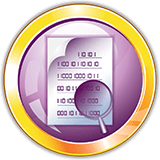
Finding database version with DBMS_UTILITY.DB_VERSION
This very short article comes from a post to comp.databases.oracle.server in answer to a question on how to get the database version using PL/SQL. This simple example program in PL/SQL using DBMS_UTILITY.DB_VERSION shows how the version and compatibility can be found. Here it is:
SQL> set serveroutput on size 1000000
SQL> l
1 declare
2 lv_version varchar2(100):='';
3 lv_compat varchar2(100):='';
4 begin
5 dbms_utility.db_version(lv_version,lv_compat);
6 dbms_output.put_line('version = '||lv_version);
7 dbms_output.put_line('compatability = '||lv_compat);
8 exception
9 when others then
10 dbms_output.put_line(sqlerrm);
11* end;
SQL> /
version = 9.2.0.1.0
compatability = 9.2.0.0.0
PL/SQL procedure successfully completed.
SQL>
Running my privilege check script for dbms_utility shows that it is available for public use:
SQL>
who_can_access: Release 1.0.0.0.0 - Production on Thu Mar 11 15:09:27
2004
Copyright (c) 2004 PeteFinnigan.com Limited. All rights reserved.
get user input
NAME OF OBJECT TO CHECK [USER_OBJECTS]: dbms_utility
OWNER OF THE OBJECT TO CHECK [USER]: sys
OUTPUT METHOD Screen/File [S]:
FILE NAME FOR OUTPUT [priv.lst]:
OUTPUT DIRECTORY [/tmp]:
Checking object => SYS.DBMS_UTILITY
====================================================================
Object type is => PACKAGE (TAB)
Privilege => EXECUTE is granted to =>
Role => PUBLIC
PL/SQL procedure successfully completed.
For updates please visit /tools.htm
SQL>
That's , a simple example of the use of the built in package DBMS_UTILITY.DB_VERSION available for public use. DBMS_UTILITY.DB_VERSION is an alternative to using simple SQL commands to get the compatibility from v$parameter and the versions from v$version techniques.
Back
















